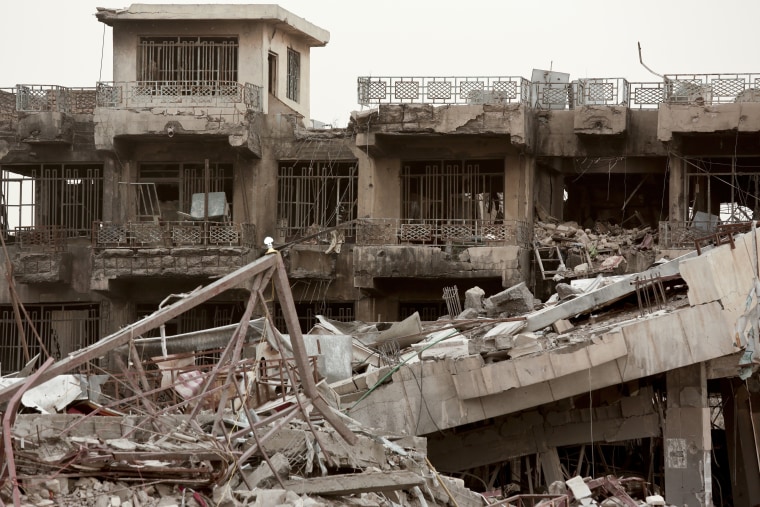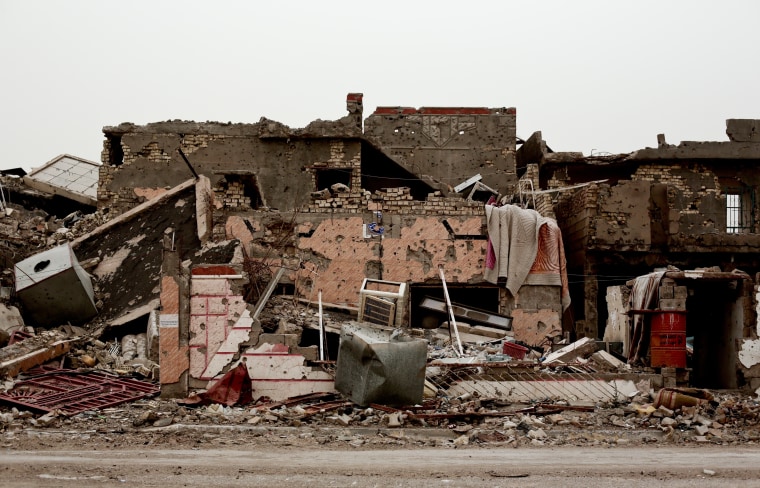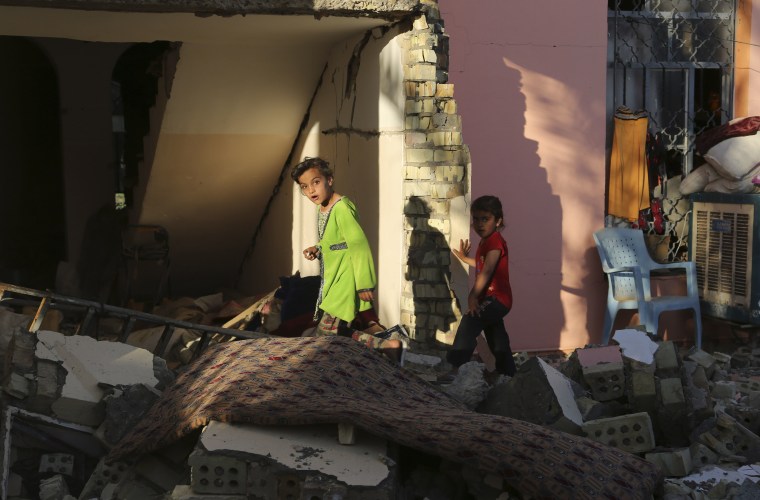RAMADI, Iraq — This is what victory looks like in the Iraqi city of Ramadi: In the once thriving Haji Ziad Square, not a single structure still stands. Turning in every direction yields a picture of devastation.
A building that housed a pool hall and ice cream shops — reduced to rubble. A row of money changers and motorcycle repair garages — obliterated, a giant bomb crater in its place. The square's Haji Ziad Restaurant, beloved for years by Ramadi residents for its grilled meats — flattened.
The destruction extends to nearly every part of Ramadi, once home to 1 million people and now virtually empty. A giant highway cloverleaf at the main entrance to the city is partially toppled. Apartment block after apartment block has been crushed. Along a residential street, the walls of homes have been shredded away, exposing furniture and bedding. Graffiti on the few homes still standing warn of explosives inside.

When Iraqi government forces backed by U.S.-led warplanes wrested this city from ISIS militants after eight months of ISIS control, it was heralded as a major victory. But the cost of winning Ramadi has been the city itself.
The scope of the damage is beyond any of the other Iraqi cities recaptured so far from the jihadi group. Photographs provided to The Associated Press by satellite imagery and analytics company DigitalGlobe show more than 3,000 buildings and nearly 400 roads and bridges were damaged or destroyed between May 2015, when Ramadi fell to ISIS, and Jan. 22, after most of the fighting had ended. Over roughly the same period, nearly 800 civilians were killed in clashes, airstrikes and executions.
Now the few signs of life are the soldiers manning checkpoints, newly painted and decorated with brightly colored plastic flowers. Vehicles pick their way around craters blocking roads as the dust from thousands of crushed buildings drifts over the landscape.
The wreckage was caused by ISIS-laid explosives and hundreds of airstrikes by the Iraqi military and the U.S.-led coalition. Besides the fighting itself, ISIS is increasingly using a scorched-earth strategy as it loses ground in Iraq. When ISIS fighters withdraw, they leave an empty prize, blowing up buildings and wiring thousands of others with explosives. The bombs are so costly and time-consuming to defuse that much of recently liberated Iraq is now unlivable.
"All they leave is rubble," said Maj. Mohammed Hussein, whose counterterrorism battalion was one of the first to move into Ramadi. "You can't do anything with rubble."

As a result, U.S.-led coalition and Iraqi officials are rethinking their tactics as they battle ISIS to regain territory. The coalition is scaling back its airstrikes in besieged urban areas. Efforts are underway to increase training of explosive disposal teams.
The new approach is particularly key as Iraq and the coalition build up to the daunting task of retaking Mosul, Iraq's second-biggest city, held by ISIS for nearly two years.
"They know they can't just turn Mosul into a parking lot," said a Western diplomat in Baghdad who has been present for a number of meetings with coalition and Iraqi defense officials regarding the Mosul operation. The diplomat commented on condition of anonymity because he was not authorized to speak to the press.
In January, after ISIS was pushed out of Ramadi, thousands of families returned to their homes. But residents have since been barred from coming back because dozens of civilians died from ISIS booby traps. Officials estimate ISIS planted thousands of IEDs, improvised explosive devices, across the city. Janus Global Operations, an American firm, began working to remove them last month and said it has so far cleared around 1,000 square yards — a fraction of a city block.
The vast majority of the city's population remains displaced.

Ramadi lies on the Euphrates River west of Baghdad and is the capital of Iraq's Sunni heartland, Anbar province. Even as ISIS swept over most of the province and northern Iraq in 2014, Ramadi had held out under tenuous government control. After months of fighting, in May 2015, ISIS fighters captured it by unleashing a barrage of truck and suicide bombs that overwhelmed government forces.
They raised their flag above Anbar Operations Command center, the former provincial police and military headquarters that was once a U.S. military base, then proceeded to largely level the complex with explosives. They methodically destroyed government buildings in the days that followed.
Over the course of the eight-month campaign to push ISIS out of Ramadi, coalition aircraft dropped more than 600 bombs on the city. The strikes targeted ISIS fighters, but also destroyed bridges, buildings and roads, the Pentagon has acknowledged. Government forces seized districts on the outskirts and in December launched their final assault.
As Iraqi ground forces moved into Ramadi, ISIS methodically laid explosives and blew up swaths of the city's infrastructure. The electrical grid was almost completely destroyed and the city's water network was also heavily damaged. The jihadis bombed the city's remaining bridges and two dams. Though most of the population had already left, ISIS fighters tightened checkpoints along main roads out of the city to prevent civilians from fleeing. They later used families as human shields as they made their escape.
"ISIS made a concerted effort to ensure the city would be unlivable," said Patrick Martin, an Iraq researcher at the Institute for the Study of War.
Hamdiya Mahmoud's family home was destroyed by ISIS militants.
"I didn't let my youngest son go to school to save money to build this house," Mahmoud said amid the rubble, breaking into sobs, "This house is really priceless to me, it's like one of my sons."
Mahmoud said she would not seek revenge for the damage done to the property. But as her husband looked over the ruins of his house, he was less forgiving.
"I swear to God," said Ali Hussein Jassim, "if I learn who did this I will not keep silent."